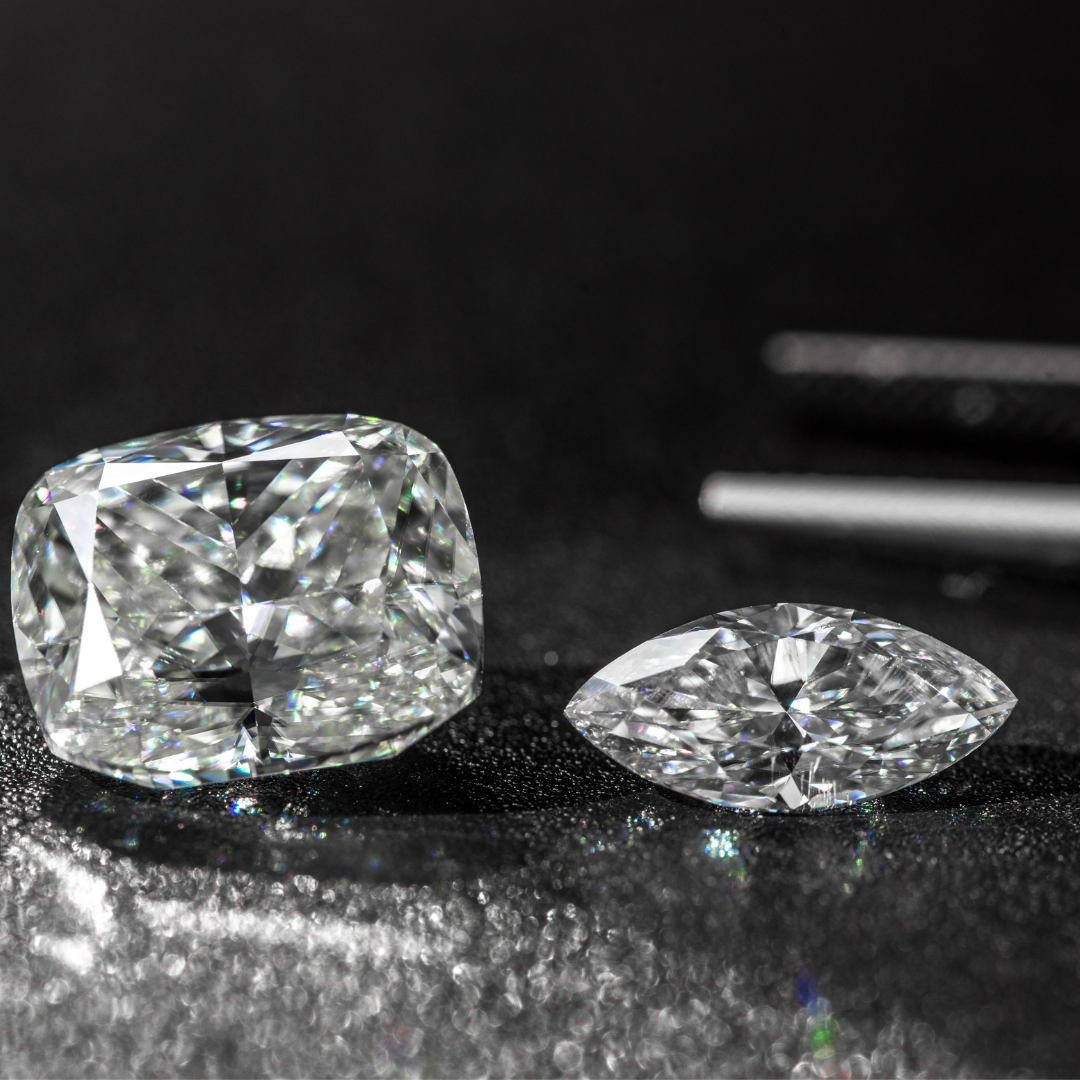
The 4C's of diamond quality - Carat weight, Cut, Clarity, and Color
The 4C's of diamond quality - Carat weight, Cut, Clarity, and Color - were developed by the Gemological Institute of America (GIA) in the 1950s as a universal standard for evaluating a diamond's quality and value. The GIA is a non-profit organization that is widely recognized as one of the world's foremost authorities on diamonds and gemstones. The 4C's have since become the global standard for grading and evaluating diamonds, and are used by jewelers, diamond traders, and consumers around the world to determine the value and quality of a diamond.
It’s important to make informed decisions when buying your center stone that will forever capture your love story.
Carat
Diamond carat is a measure of a diamond's weight, with one carat equaling 200 milligrams. Carat weight is often used as an indicator of a diamond's size, with larger diamonds having a higher carat weight.
It's important to note, however, that carat weight is just one of the four factors that determine a diamond's value and quality, along with cut, clarity, and color. Two diamonds of the same carat weight can have vastly different values depending on their cut, clarity, and color grades.
In addition to carat weight, diamonds are also often sold in fractional sizes or points. For example, a diamond that weighs 0.50 carats can also be referred to as a 50-point diamond.
When it comes to choosing a diamond for a bespoke ring, it's important to consider all four factors - carat weight, cut, clarity, and color - and how they work together to create a beautiful and valuable diamond.
Cut
The cut of a diamond refers to how well it has been cut and shaped to reflect light. The cut is arguably the most important factor in determining a diamond's overall beauty and brilliance. A well-cut diamond will reflect and refract light in a way that maximizes its beauty and sparkle, while a poorly cut diamond can appear dull or lifeless.
The GIA grading system for diamond cut takes into account several factors, including the diamond's proportions, symmetry, and polish. Diamonds can be graded as Excellent, Very Good, Good, Fair, or Poor.
An Excellent cut diamond reflects almost all the light that enters it, creating a high level of brilliance and fire. Very Good and Good cut diamonds also reflect a significant amount of light, but may not have the same level of brilliance as an Excellent cut diamond.
Fair and Poor cut diamonds reflect less light and may appear dull or lifeless. They may also have noticeable asymmetry or proportions that detract from their overall beauty.
Clarity
The clarity of a diamond refers to the presence or absence of internal and external characteristics, also known as inclusions and blemishes. These characteristics can affect the diamond's overall appearance and value.
The GIA clarity grading scale ranges from Flawless (FL), which means no inclusions or blemishes are visible under 10x magnification, to Included (I3), which means inclusions and blemishes are visible to the naked eye. In between these extremes, there are various grades that reflect the number, size, and visibility of inclusions and blemishes in a diamond.
Diamonds that are graded Flawless (FL) or Internally Flawless (IF) have no visible inclusions or blemishes and are considered the rarest and most valuable. Diamonds graded Very Very Slightly Included (VVS1, VVS2) have inclusions that are difficult to see under 10x magnification, while diamonds graded Very Slightly Included (VS1, VS2) have slightly more visible inclusions.
Diamonds graded Slightly Included (SI1, SI2) have noticeable inclusions under 10x magnification, while diamonds graded Included (I1, I2, I3) have inclusions and blemishes that are visible to the naked eye and can affect the diamond's beauty and overall value.
Color
The color scale for diamonds refers to the presence or absence of color in a diamond, with the most valuable diamonds being completely colorless. The GIA color grading scale for diamonds ranges from D (colorless) to Z (light yellow or brown).
Diamonds that are graded D, E, or F are considered colorless and are the most valuable. These diamonds are rare and have no visible color, appearing pure and clear. Diamonds graded G, H, I, and J are near colorless, with a slight yellow or brown tint that is often not visible to the naked eye.
Diamonds graded K to Z have a more visible yellow or brown color, with the color becoming increasingly noticeable as you move down the scale. These diamonds are less valuable than higher grade diamonds but can still be beautiful and valuable in their own right.
It's important to note that color grading is subjective and requires trained experts to accurately evaluate. At HC Jewellers, our GIA-certified diamond experts and gemologists ensure that our clients receive accurate and reliable information about their diamond's color grade. This allows us to help our clients find the perfect diamond that meets their personal preferences and budget while still being of the highest quality and value.
At HC Jewellers, we understand that navigating the 4c's can be overwhelming, which is why we are committed to guiding our clients through the process with transparency and expertise. Our diamond experts, Gulzar and Mimi, are always available to answer any questions you may have and help you find the perfect diamond for your bespoke creation. Book a consultation to find your dream diamond.
Book your consultation today and receive $200 credit off your custom diamond ring, a complimentary mani, and a mini engagement shoot.
Find your engagement ring budget here.
